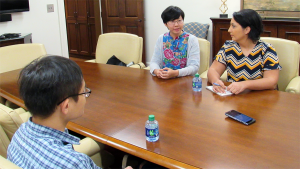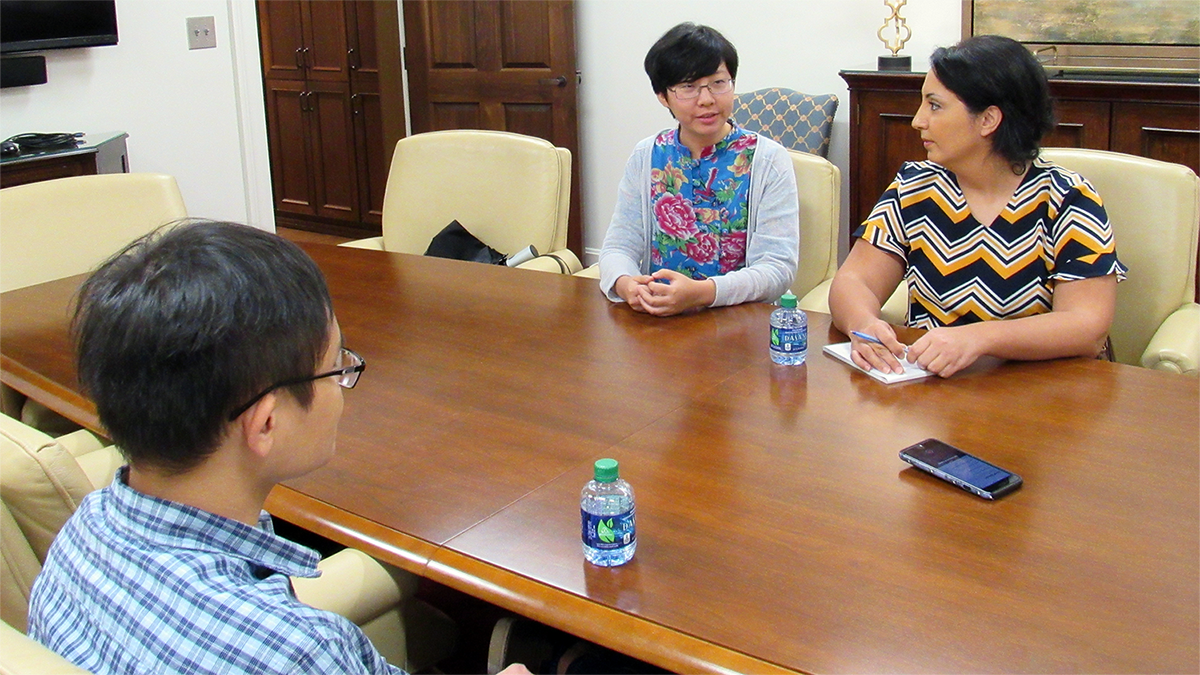By Brock Parker
Water is one of the most important resources on the planet, and researchers at The University of Alabama are calculating ways to improve its quality and management.
Part of this equation is the collaboration between various disciplines through the Alabama Water Institute. Affiliated faculty members in the department of mathematics are offering their expertise in modeling to find solutions to water issues.

“We want to talk to people from other departments,” said Dr. Dang Nguyen, assistant professor in applied and computational math. “Maybe they have many interesting problems from their own experiences and need some tools from mathematics, so we can help and work together.”
UA’s math department recently made several strategic searches to hire mathematicians whose strong interdisciplinary research will support the work of the research institutes on campus, such as AWI.
“This is a win for all involved,” said Dr. David Cruz-Uribe, professor and mathematics department chair. “It helps our department build stronger ties with the other sciences, and it provides researchers with the mathematical expertise they need to develop better solutions to their problems.”
Water touches every aspect of life, and Nguyen focuses on problems that arise from ecology, how organisms interact with their physical surroundings. While working with ecologists from the University of California, Davis, he’s been able to create theoretical models that show potential for cleaner water.
“I have been working on some models in wastewater treatment using microorganisms,” he said. “I use tools from optimal contour to manage the treatment of the wastewater, but I hope when I meet more people from other departments, I can benefit from practical projects.”
Along with Nguyen, fellow assistant math professors Dr. Mojdeh Rasoulzadeh and Dr. Chuntian Wang want to take their expertise from the classroom to the field.
“Research in water-related areas provides our students with valuable training opportunities in applied mathematics,” said Rasoulzadeh. “They gain a solid foundation in advanced mathematical modeling, computational mathematics and extensive interdisciplinary collaboration experience with other disciplines such as physics, chemistry, geology and engineering.”
According to Rasoulzadeh, fluid flow in complex subsurface systems is governed by several mechanisms that operate at different spatial and temporal scales. In these systems, a principal issue is the lack of a sophisticated modeling tool that takes into account the impact of nanoscale and microscale processes on the overall behavior of the macroscale and, at the same time, is representative at the reservoir scale.
“My research aim is to address the unresolved issues in multiscale multiphysics subsurface flow modeling in highly heterogeneous reservoirs, which require revisiting the modeling approach via application of advanced mathematical tools,” she said.
The use of mathematical models to better understand the interaction between the different phenomena involved and to accurately estimate the potential of complex subsurface systems is very promising.
“In years past, I was focused on flow and rock dissolution in highly fractured vuggy carbonate reservoirs with the applications to flow in karst aquifers and sinkhole formation and evolution,” said Rasoulzadeh.
For Wang, her research direction is more theoretical. She is currently working on stochastic-statistical agent-based models of residential crime, which in application would significantly help law enforcement to understand the feedback between treatment and hotspots of crimes localized in time and space. The models are still being implemented.
“It shows how we can help predict where the crime may occur, and we can prevent it before it happens, allowing for more efficient strategies,” said Wang.
Wang wants to show mathematical models can help solve problems in which they may have not been considered. She said these methods, such as her example of the crime models, can prove beneficial in water research.
“I am very interested in working more with fluid dynamics and how water is transported. I think there is great potential in using theoretical math, pure math, to tackle some of the very practical problems about water,” she said. “There has to be people to build this bridge, and I hope it’s us and our colleagues on campus.”
All three researchers want to protect and enhance water quality across Alabama and the world, and they are excited about teaming up with other researchers on campus to accomplish that.
“We can let math be applied and somehow use math to solve real-world problems, to be hand-in-hand with all the other departments,” said Wang. “We have models, and we can make predictions to make better models. We can take these out into the field to help the community, the state and society. That is our eventual goal.”
Researchers interested in collaborations can contact the applied and computational math faculty members through their website. A full list of AWI-affiliated members can also be found on its website.
